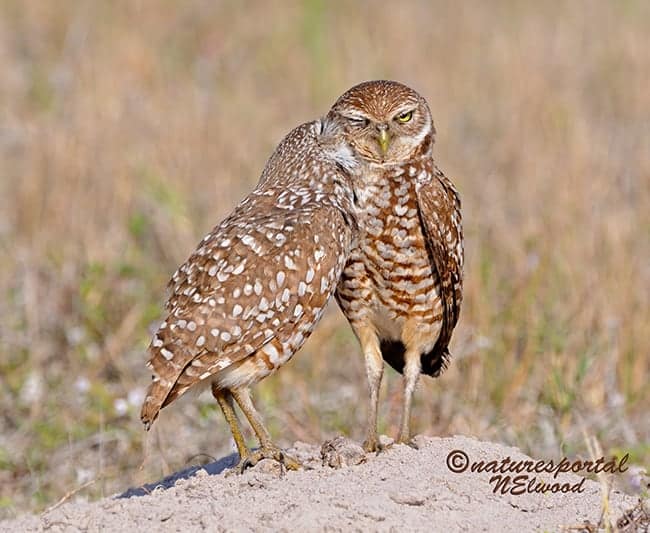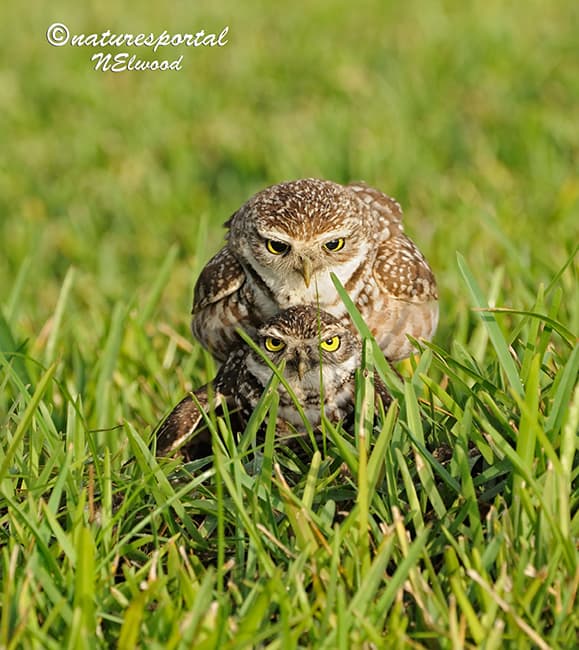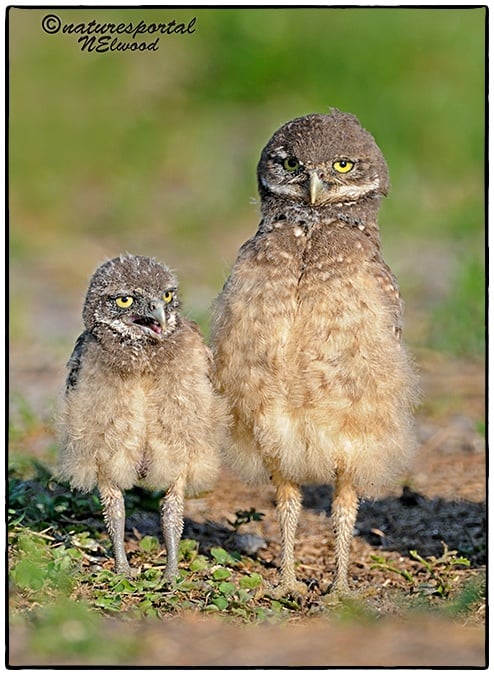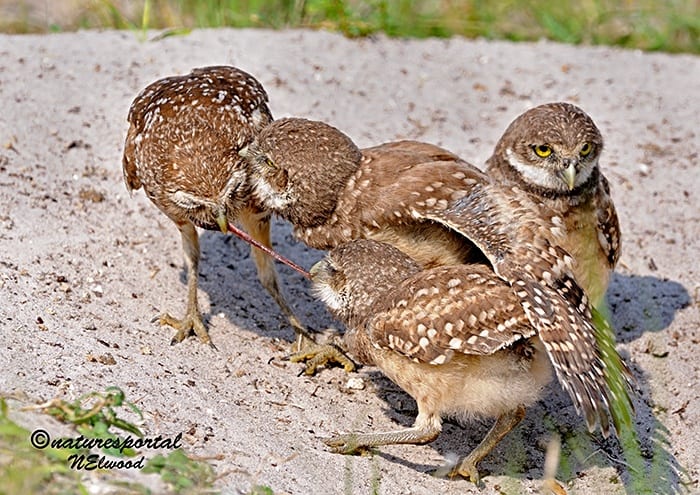There are several places in Florida that in February each yearthe burrowing owls return to and nest. Their nests are burrows mostly borrowed from other animals such as praire dogs and the like. The adults are 7-11 inches tall, only slightly larger than an American Robin. Males and females are similiar in size and appearance, but the males might have slightly lighter feathers due to the fact they stay outside the burrows more, which sun-bleach their feathers. They like a wide range of foods from toads, small rodents, andinsects even fruits and seeds. The female will lay an egg every 1 or 2 days until she has completed a clutch, which usually is 4-12 eggs. She incubates the eggs for 3 to 4 weeks while the male brings food to her. After the eggs hatch, both parents feed the chicks. Four weeks after hatching the chicks are usually able to fly and leave the nest burrow. As you can see from the pictures, because of the way the eggs are laid, every clutch will have chicks of different ages, hence different sizes. In Florida the owls seem to reappear each year to nesting areas that are fairly close to human activity, which makes them much easier to approach and photograph. The rule though is to stay outside of 20 ft and as always watch the birds as you photograph to make sure you are not causing them any stress. In return they will provide great photographic opportunities and enjoyment.
Burrowing Owl Kiss
Which leads to Burrowing Owls Mating
Which Of Course Leads to Little Burrowing Owls
The Chicks Fighting For The Worm
The Parent Brings In A Cricket
www.naturesportal.net
Nancy Elwood
Nancy Elwood is a Florida based professional nature and wildlife photographer. Her interest in the natural world started as a child reading and watching National Geographic. After graduating from Florida State University School of Nursing, she developed her interest in photography travelling with several National Geographic photographers to Africa, Antarctica and the Falkland Islands. With them she started to hone her skills in capturing natures wonders through a camera lens. Nancy now, when not in the field, shows her work in juried art shows and runs photography workshops.







Leave a Reply